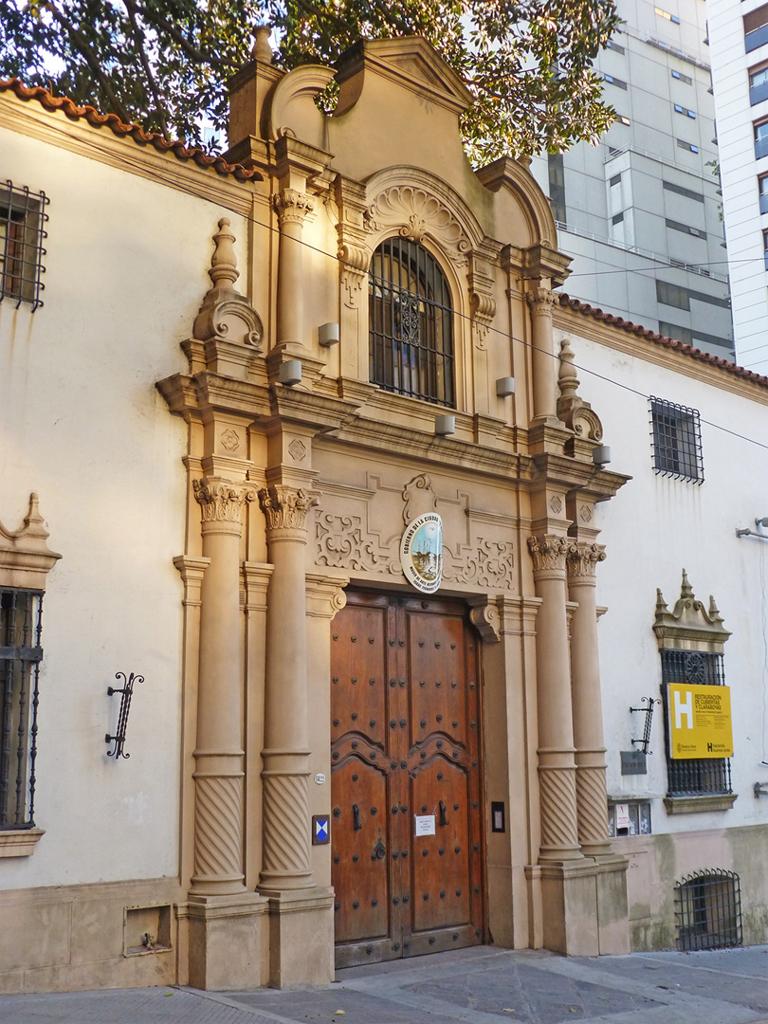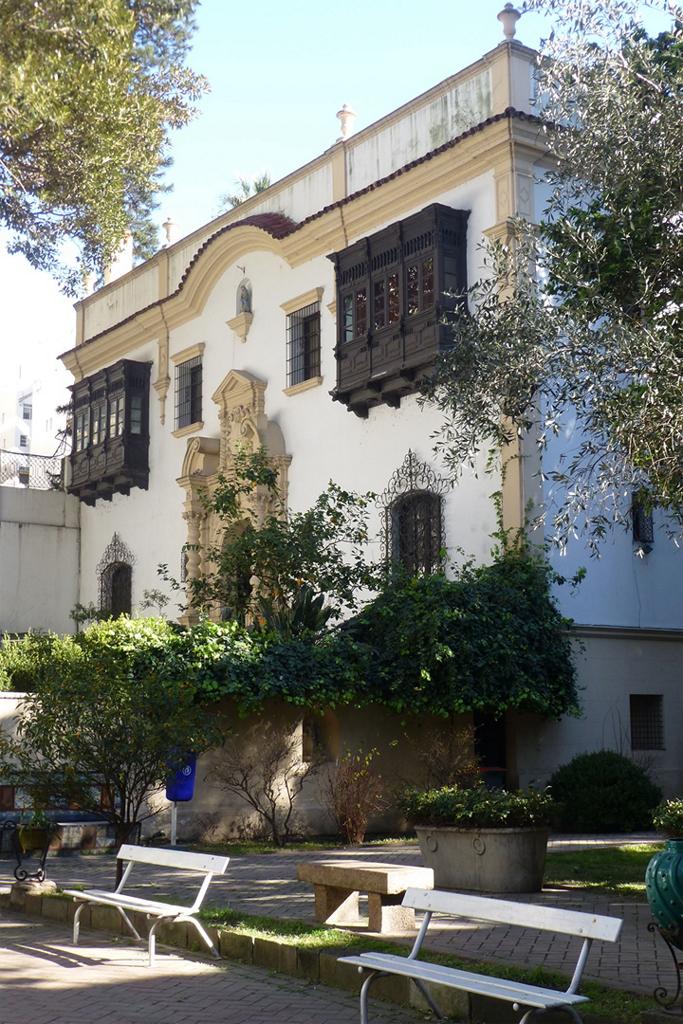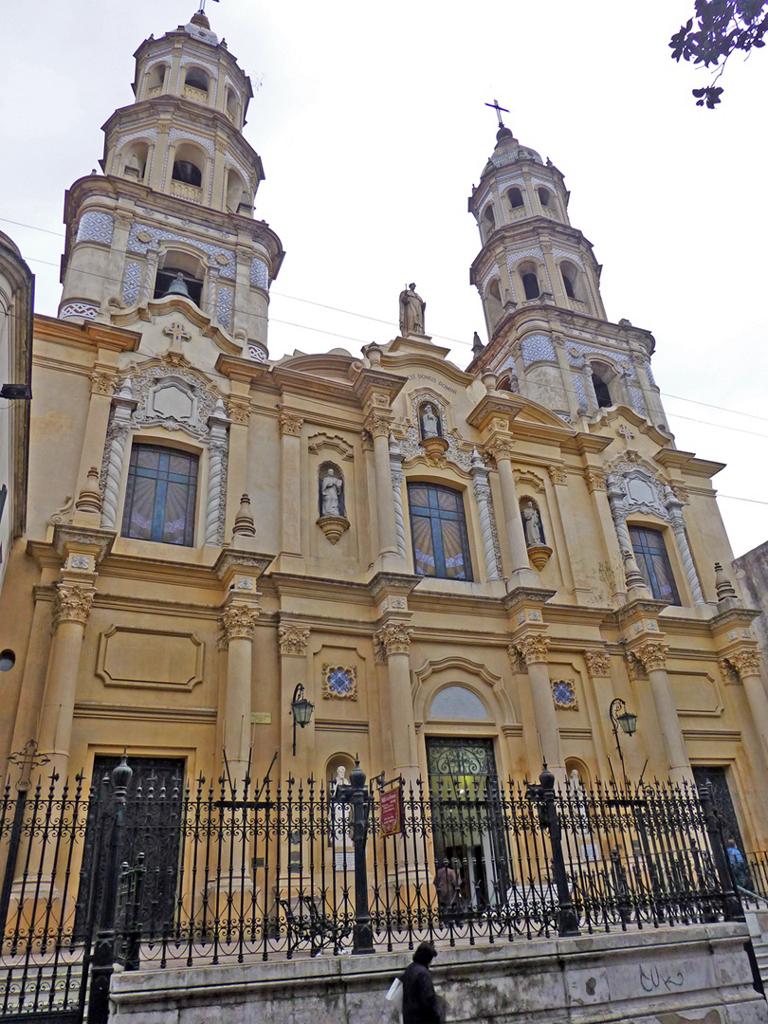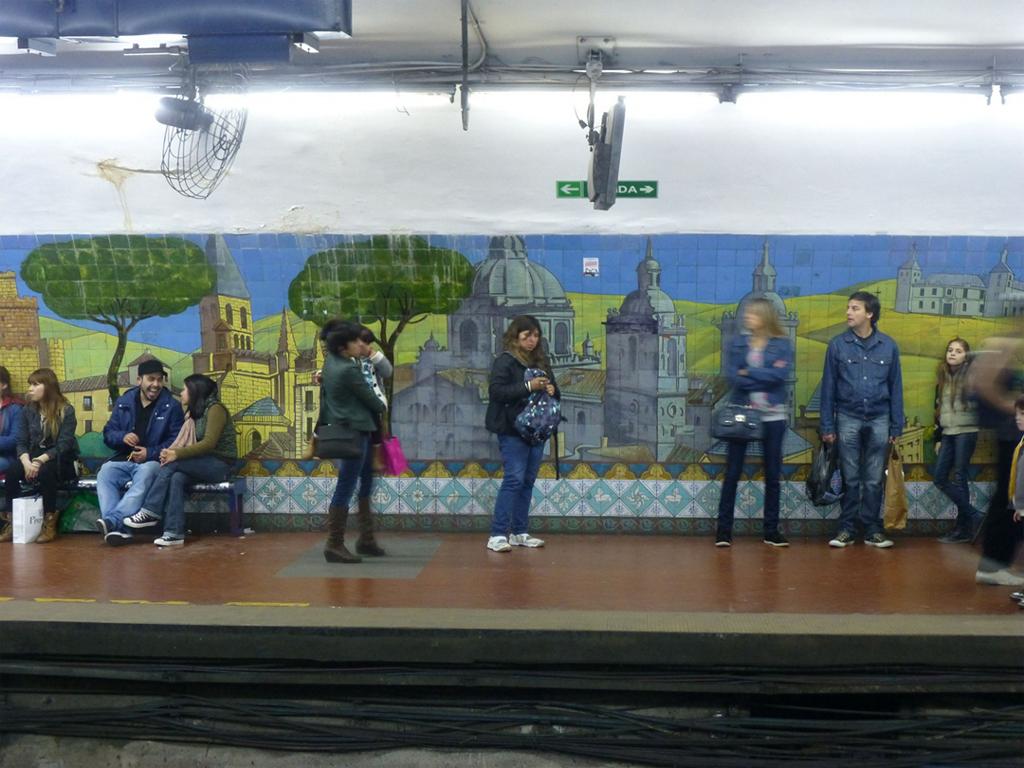“Architecturally, Buenos Aires tended to distance itself from Spain, just as it had done politically... There were those who tried to correct this propensity; who tenaciously perpetuated “colonial” buildings, structures all too visible— such as the new Alsina Bridge, its walls heavy with caricature— which do not blend in with the rest of the city and remain isolated monsters...”
—Jorge Luis Borges (Argentine author, 1888-1989) [i]
The urban location of the colonial façades and Andalusian patios featured throughout this collection may surprise its viewers. After all, Buenos Aires is renowned for the international nature of its modern architecture, which drew heavily upon French, Italian and British influences. Yet amidst the Neoclassical, Beaux-Arts, Art Nouveau, and Art Deco monuments that dominate Argentina’s capital city, one encounters another twentieth-century movement — the Neocolonial style, also known as the Colonial Renaissance. The photographs in this collection capture the buildings Borges referred to as “isolated monsters,” showcasing a style that attempted to redefine national identity through architecture during the politically turbulent decades from 1910 to 1940.

Fig. 1: Exterior wall and street entrance, Museo Isaac Fernández Blanco, by Martín Noel, 1922.
Neocolonial architecture in Argentina surfaced in reaction to the overwhelmingly cosmopolitan pavilions built for the Centennial of 1910. A small group of intellectuals spearheaded the movement, including author Ricardo Rojas (1882-1957), as well as architects Martín S. Noel (1888-1963) and Angel Guido (1896-1960).[ii] The advocates of the style pushed for a new national image in conjunction with nationalist ideology. The movement was rife with contradictions, critiquing cultural dependency on Western Europe, while stressing Spanish roots and the historiography of German art historian, Heinrich Wölfflin.[iii] Referencing Spanish colonial and South American indigenous motifs, the neocolonial movement crafted an elite vision of “Argentinidad.”[iv]

Fig. 2: Front façade of enclosed residence, Museo Isaac Fernández Blanco, by Martín Noel, 1922.
This collection demonstrates how this vision was projected into public space through private patronage and public works. It features the most prominent structures in the style, including the Museo de Arte Hispanoamericano “Isaac Fernandez Blanco” (1920-1922), which originally served as the private residence of the architect Martín S. Noel and his brother Carlos Noel, Municipal Intendant of Buenos Aires (1922-1928).[v] Noel’s home reflects his interest in Spanish Andalusian architecture, incorporating mudéjar-inspired tiles and mashrabiyas, screened balconies from the Middle Eastern architectural tradition. Various residences of prominent Argentine artists and authors were constructed or remodeled in the style, including the former home of Rojas (1927-1928) and the sculptor Rogelio Yrurtia (1921), which also serve as house museums today. Throughout the 1930s, wealthy families in the Belgrano, Palermo, Recoleta and Villa Crespo neighborhoods frequently constructed neocolonial residences. Between 1938 and 1943, Borges himself lived in such a home, located at 1670 Anchorena street (1924) — which may have spurred his reflections on the style.

Fig. 3: Façade, Church of San Pedro González Telmo, Remodeled by Pelayo Sáinz, 1931.
Public structures and spaces included in this collection also echo these inclinations. The Escuela “Guillermo Rawson” (1922-1926), remodeled by architect Alberto Gelly Cantilo (1887-1942), and the Maronite Colegio San Maron (1920) by Martín Noel represent variations of the style in school environments. The Banco de Boston (1922-1924), designed by Englishman Paul Bell Chambers and North American Louis Thomas Newberry, exemplifies the Neoplateresque version of this revivalist movement and its global reach. The Teatro Cervantes (1921) and Teatro Colonial (1944) demonstrate the eclectic diversity of the movement in dramatic spheres. The original colonial façade of the Church of San Pedro Telmo was even remodeled in neocolonial style, to heighten the visual impact of its decorative program. Neocolonial imagery also infiltrated into large public works, such as the Alsina Bridge (1938). Martín Noel and his colleagues also designed a series of public murals decorating the city’s subway from 1934-1939. These evocative ceramic landscapes of Spain and Argentina, and their Andalusian-inspired tiles, nostalgically reference the colonial era in a bustling space of modern transit. [vi]

Fig. 4: Buenos Aires Subway Murals, Line C: "Paisajes de España"/ "Spanish Landscapes," designed by Martín Noel, 1934.
This collection ultimately illustrates the omnipresence of the neocolonial style throughout Buenos Aires. Adorning the façades of homes, institutions and public transit systems, the style and its nationalist associations were far more pervasive in the modern era than scholarship currently reflects, and beckons further investigation.
[i] Jorge Luis Borges, “Prologue,” quoted in Rossi, Attilio. Buenos Aires en tinto chino, Poema de Rafael Alberti. (Buenos Aires: Losada, 2010). I would like to thank Silvio Killian, Librarian at the Centro Cultural Recoleta, for sharing this literary reference as well as the postcard image of the Alsina bridge featured in this collection. The translation here from the original Spanish is my own.
[ii] My thanks to Director Magdalena Garcia and librarians Alicia Sirvent and Ricardo Gasalla at the Library of the Sociedad Central de Arquitectura (SCA), for their valuable assistance with historical information and texts on the Neocolonial style in Argentina.
[iii] I am grateful to Prof. Laura Malosetti, Director of the Graduate program in the History of Argentine and Latin American Art at the Instituto de Altos Estudios Sociales (IDAES) of the Universidad Nacional de San Martin (UNSAM), who kindly shared her scholarly article, “Impacto de la “moderna” historiografía europea en la construccíon de los primeros relatos de la historia del arte argentino,” co-written by Ana María Telesca, Laura Malosetti Costa and Gabriela Sircusano, in Disciplinas: estética e historia del arte en el cruce de los discursos. XXII. Coloquio Internacional de la Historia del Arte, México, Instituto de Investigaciones en estéticas de la Universidad Autonoma de Mexico, 1999.
[iv] Ricardo Rojas coined this term in his text, La argentinidad: ensayo histórico sobre nuestra conciencia nacional en la gesta de la emancipación, 1810-1816 (Buenos Aires: J. Roldán, 1922). It refers to a sense of Argentine identity, or “Argentinian-ness.”
[v] My thanks to the generosity of curator Patricio López Méndez of the Museo de Arte Hispanoamericano “Isaac Fernandez Blanco,” for allowing me to photograph the museum during recent restoration work. Art historians Diego Fernando Guerra and Carolina Vanegas Carrasco graciously assisted with museum contacts.
[vi] Key sources for my research included: María de las Nieves Arias Incollá and Alberto Petrina, Guía patrimonio cultural de Buenos Aires: Arquitectura neocolonial. Vol. 7. Buenos Aires: GOBBsAs, Secretaria de Cultura, 2003; Ramon Guiterrez, Margarita Gutman and Victor Perez Escolano. El Arquitecto Martin Noel: su tiempo y su obra, (Junta de Andalucia, Consejeria de Cultura, 1995); and Alberto de Paula, “Neocolonial: Buscando las raíces de la identidad nacional” in Berto Gonzalez Montaner, ed. Vanguardias Argentinas: Obras y Movimientos en el siglo XIX Y XX. Vol.1. (Buenos Aires: Arte Grafico- AGEA, 2005, Clarín Arquitectura, 2005).